New Thematic Collection on “Disrupted Identities: Colonialism, Personhood, and Frontier Forts”
Post prepared by Mark Axel Tveskov, Southern Oregon University Laboratory of Anthropology The forthcoming issue…
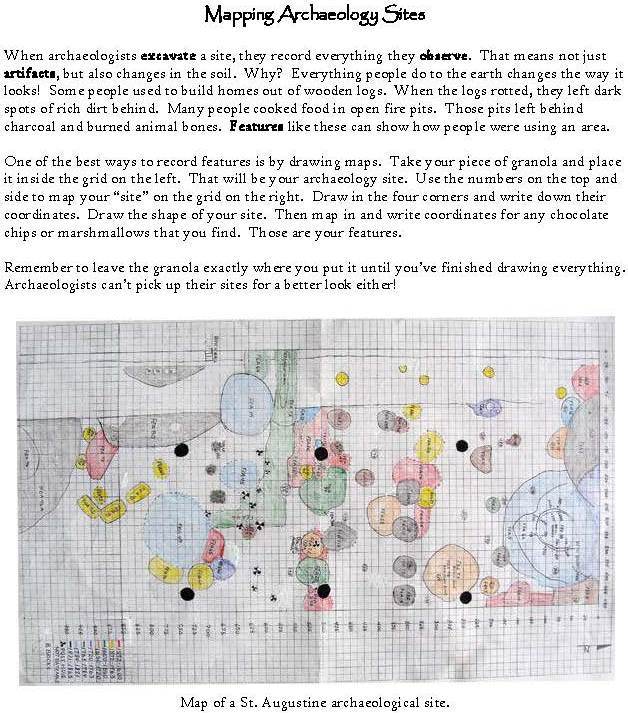
This lesson uses a granola bar “test unit” to teach Cartesian Coordinates & mapping. A color-coded map of a site in St. Augustine, FL makes an apt example. (courtesy of St. Augustine Archaeology Division).
“Ooh! I need this! I’m teaching my kids about this soon. This one too!” The teacher walked away from our table, two new archaeology- based math lessons in hand. I was almost giddy. As a public archaeologist, I love finding ways to reach out to educators, whose efforts shape the future of our communities. Attending teacher conferences, such as the Florida Council of Teachers of Mathematics, offers a unique chance to reach out to teachers.
The Florida Public Archaeology Network uses an education outreach strategy that involves working directly with teachers. Believe me, I love getting into classrooms and engaging students in archaeology activities—it lights my fire to spark curiosity and fascination in kids. But interacting directly with teachers affords a more efficient method of disseminating archaeology to students. According to Ruth Selig (1991: 3), each educator that attends an archaeology workshop reaches 120 students per year.
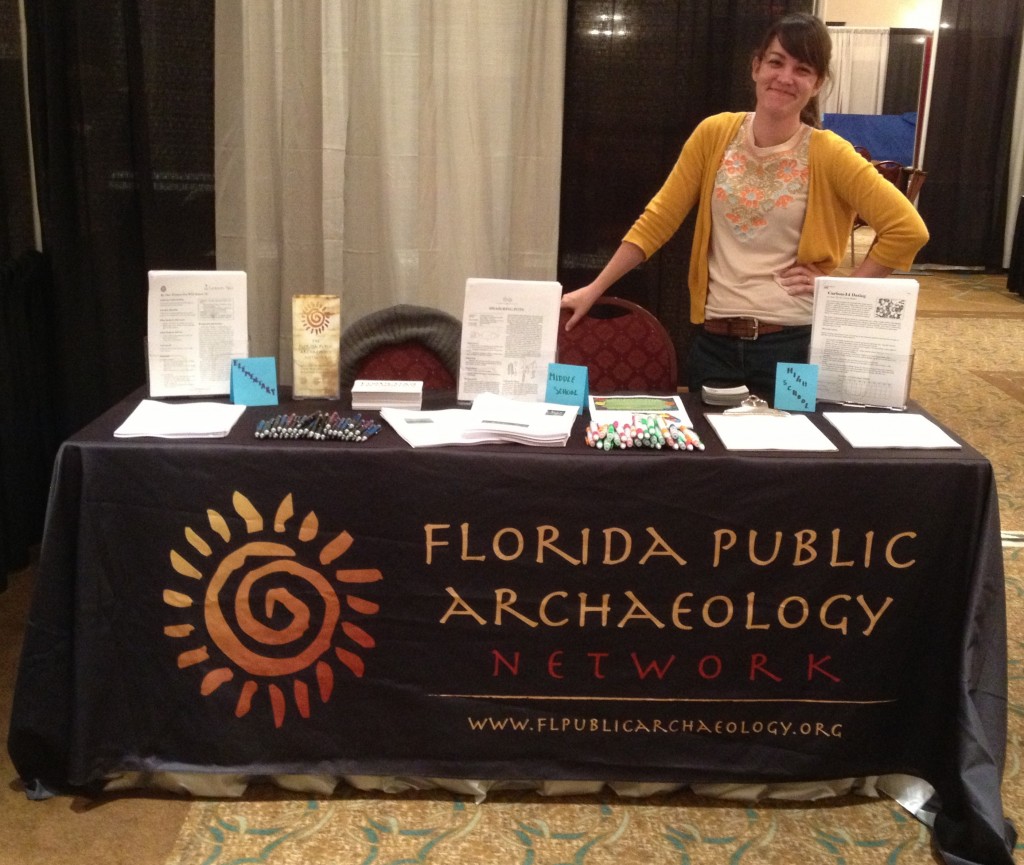
Our vendors’ table is set and ready for the conference to start. Photo courtesy of the Florida Public Archaeology Network.
Statewide conferences for teachers of math, science, social studies, and even media specialists provide an apt forum to introduce archaeology resources to a large number of teachers in just a couple of days. Better, we don’t have to navigate the structure of a particular school district to make contact. They arrive at the conference and here we are–ready to provide resources that speak to specific standards and skills, using authentic archaeological examples.
In two or three days at a vendors’ booth, we see hundreds of educators. This year, we met teachers of various grades, curriculum specialists, district math coordinators, and even staff from Florida’s Department of Education. We offered a range of resources: lessons, free classroom visits, and teacher workshops (that often provide in-service credit). Teachers received our contact information and provided e-mail addresses if they wanted us to follow up with them.
We also offered a presentation to enhance our connection with the most interested teachers, treating it as a mini-workshop on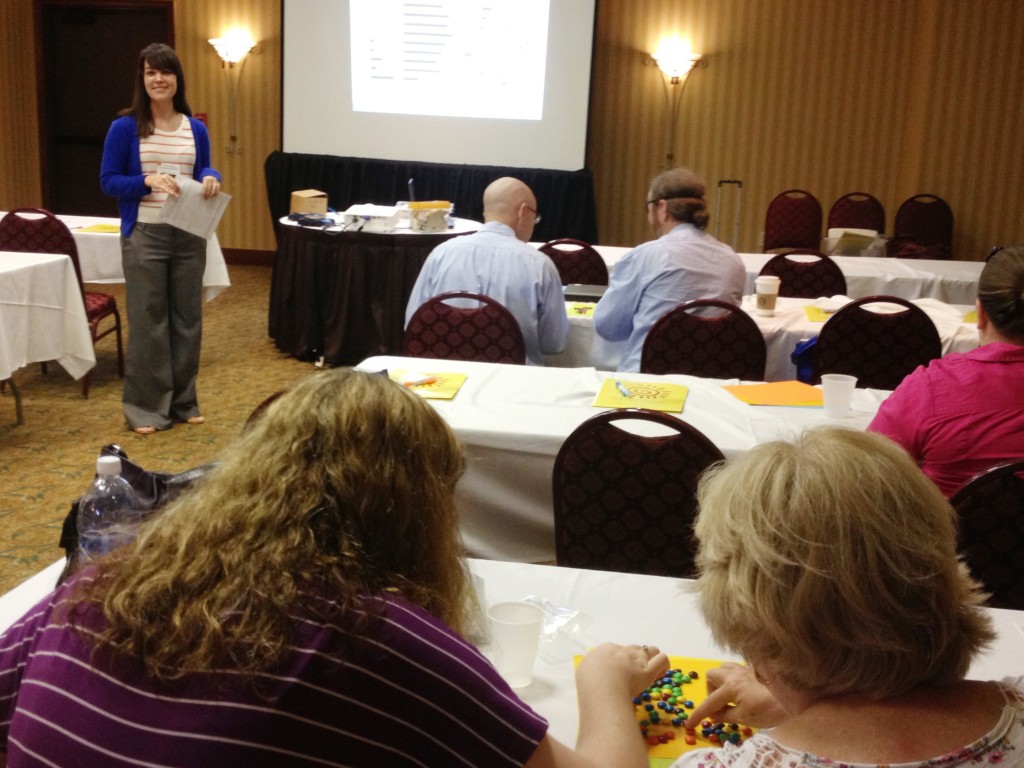 some of our favorite math lessons. Each participant receives a folder with a bit of info about FPAN and copies of several lessons. I presented a slide show that demonstrates authentic examples of archaeologists applying principles of mathematics: mapping to scale, using the Pythagorean Theorem, and ceramic frequency analysis that explores a changing market. Then our educators get hands-on experience, trying some of our favorite lessons for themselves and asking questions as they arise.
some of our favorite math lessons. Each participant receives a folder with a bit of info about FPAN and copies of several lessons. I presented a slide show that demonstrates authentic examples of archaeologists applying principles of mathematics: mapping to scale, using the Pythagorean Theorem, and ceramic frequency analysis that explores a changing market. Then our educators get hands-on experience, trying some of our favorite lessons for themselves and asking questions as they arise.
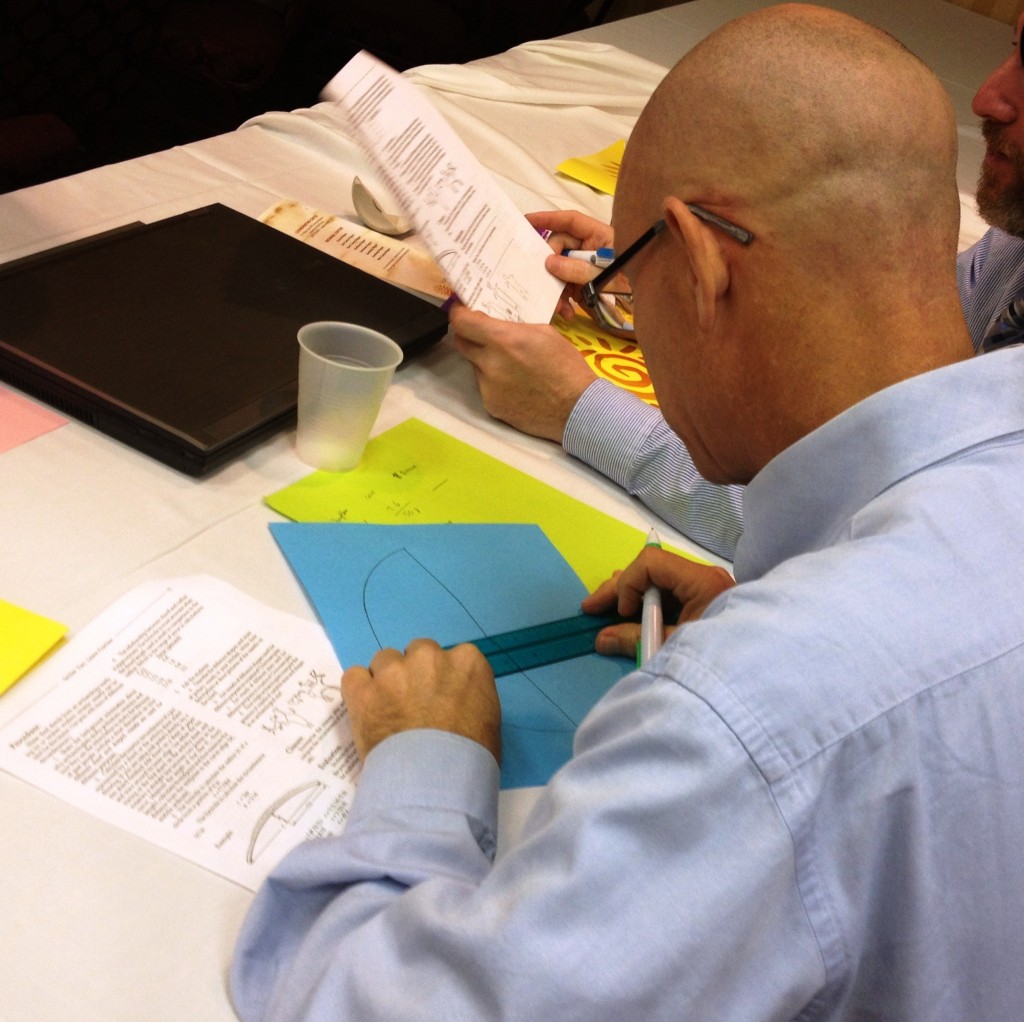
A teacher uses a sherd to apply a Project Archaeology lesson on finding circumference. Photo courtesy of the Florida Public Archaeology Network.
The table and workshop both yield overwhelming positive response to the resources we offer. And I’ll be honest: I take personal and professional gratification from working at them. I was the child of two teachers; having watched my mother (a special education teacher) struggle for years to create her own curriculum and cobble together materials from disparate sources, I know educators can struggle to find engaging material with authentic applications of educational standards. Having a glimpse into the personal expenses that teachers can incur to offer the best experience for students, it delights me to no end when teachers ask how much a class visit costs. I know what will follow my answer: “It’s FREE?” They are excited to discover that yes, there is a LOT of math in our science, and science in our social studies, and primary source research all over the place. Students, like other humans, relate better to a concept when they see authentic examples. Seeing how skills may be used in “real life”—or even better, how a skill set can be used to explore or understand something fascinating, helps foster connections and sticky knowledge.
As an archaeologist, I love the responses we get from teachers—for any of these reasons—in a different way. The more they love our resources, the more likely they are to share them with students in the first place. They get support and authentic examples, and in the meantime increase archaeology literacy among the young population.
Having now participated in teacher conferences for a few years, I have found some strategies quite useful. Here is a quick list:
• Make contact info easily accessible. We have a postcard (that also features info about what we can do for teachers) to serve just this purpose.
• Post presentation information at your booth.
• Give it away if you can! After last year’s workshop we had some leftover folders, so we set the extra lessons out on our table. It was like Trick-or-Treat for grownups! Teachers were virtually swarming.
• If you offer lessons, address a range of grades. We handed out two lessons each for elementary, middle school, and high school.
• Align lessons with your state’s educational standards. This can be a doozy, as state standards around the country are in a state of flux right now, but teachers appreciate the effort.
• Provide lessons that meet standards in multiple subject areas, particularly in elementary and middle school. Teachers may teach to more than one subject, or cooperate with others to cover several subject areas.
If you have tried contacting teachers, what strategies have worked for you? Are there any tactics we should add to those we’re already using at teacher conferences? What challenges have you faced? Are there any methods for reaching educators that you would like to learn about more?
For a look at the educational materials that FPAN uses most often, visit Project Archaeology, or download our free lessons on Timucuan Technology, Coquina Queries, and a book of general lessons called Beyond Artifacts.
Bibliography
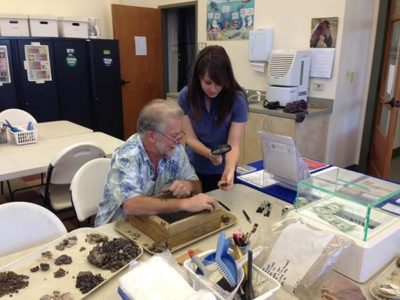
Being a former teacher makes this all the more fascinating. Makes me wish I was still at it. (Well, almost….if I had the energy that teaching takes!) Thanks for sharing, Amber. Florida teachers and kids are so lucky to have you and others.